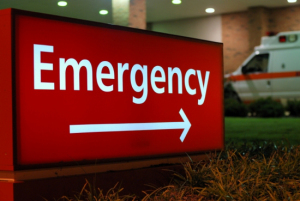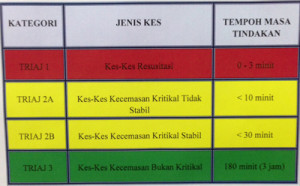We have seen it before on television. Doctors in scrubs waiting at the emergency department entrance when suddenly an ambulance screeches to a halt. Back door flies open and paramedics jump out, pushing a badly injured patient. Everybody shouting at each other in medical jargon. The scene looks chaotic and unorganized. Eventually, the doctors manage to save the patient in the nick of time. A job well done and everybody goes home happy.
Does this really happen in reality?
Yes and no. In the real emergency department, the situation is dynamic and ever changing. The hospital has no control over what type of patients or how many of them come in. So how does the emergency department cope? How do doctors decide who to see, or who to treat first?
In order to make sense of the type and the volume of patients, hospitals use a system called the triage system. It comes from the French verb “trier”, which means to sift, separate or select. In short, the triage system is used to determine the order and priority of emergency treatment. The triage system is not only used in hospitals. It is also useful in the field, for example, used in a natural disaster site or a scene of a major accident.
In most hospitals, the triage uses a colour code to ‘categorise’ or separate patients in order of priority. In Malaysia, the most common colour codes used are Red, Yellow and Green.
- Red: Critical patients; seen immediately.
- Yellow: Semi-critical; seen within minutes.
- Green: Non-critical; can be seen later.
With this system, doctors in the emergency department can understand the status of their patients better and are able to deliver effective treatment. Usually, healthcare personnel will perform a quick and focused assessment of the patient, and then decide which colour code to attach to the patient. Subsequently, the patient will be sent to the appropriate area to wait for further treatment.
Examples of conditions for each colour:
- Red: Life threatening conditions like severe trauma with excessive blood loss, major heart attack, acute stroke, etc.
- Yellow: Moderate trauma but not life threatening, for example asthmatic attacks, etc.
- Green: Minor infections, minor trauma. Non-life threatening and stable patients.
It may look like the emergency department is chaotic and sometimes one might even think that nothing is being done, but in actual fact, the doctors are prioritizing to ensure everybody receives their treatment according to the severity of their illnesses. Therefore, it is important for the public to know that emergency services are only for patients who need treatment that smaller hospitals or clinics cannot offer. This is important to ensure there is no backlog of patients in the hospital with non-emergency or non-critical illnesses that can possibly delay treatment for others who need it more.
Dr. Khoo Yoong Khean is the Managing Editor of the Malaysian Medical Gazette. He currently works in one of the busiest Emergency Department in Malaysia. Find out more about him at The Team page.
References:
- Role of triage personnel – http://www.cjem-online.ca/v1/n3/PaedCTAS/p3
- Medical Triage: Code Tags and Triage Terminology – http://www.medicinenet.com/script/main/art.asp?articlekey=79529
- Emergency department triage: an ethical analysis – http://www.biomedcentral.com/1471-227X/11/16
[This article belongs to The Malaysian Medical Gazette. Any republication (online or offline) without written permission from The Malaysian Medical Gazette is prohibited.]


